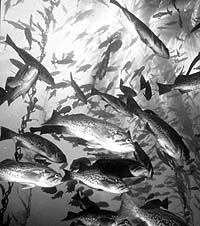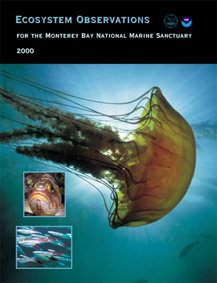MBNMS Ecosystem Observations 2000
 |
| photo Kip Evens for MBNMS |
The year 2000 has been a remarkable one for that tried and true hallmark of the national marine sanctuary system—the "stakeholder" process. Perhaps no other site in the national system has a better track record of involving stakeholders in solving resource management problems than the Monterey Bay National Marine Sanctuary. While "unique" can be an overused word these days, we believe our Agricultural and Rural Lands water quality plan is darned rare and may be unique in our country. It involves growers and ranchers around central California who will be taking steps to reduce pollutant runoff and sedimentation from agricultural fields into coastal streams and ultimately into the Sanctuary. I'm sure that this program leads the nation in its creativity and the sheer fact that our $5 billion regional agricultural industry has accepted its role to help protect marine water quality. In June in San Francisco we rolled out the results of another stakeholder initiative— a plan to protect marine water quality by moving shipping further offshore and providing greater vessel traffic organization along the central California coast. Our vessel traffic strategies received final approval by an international shipping organization in London in May and went into effect in December. In October we completed the design for our ecosystem monitoring program, SIMoN, developed to integrate and expand monitoring of the Sanctuary's ecosystem. And, after years of public dispute as to the effects of kelp harvesting, we prepared and released a plan that evaluated kelp harvesting's effects and recommended several means to reduce the limited adverse effects it can have on kelp forests in the Sanctuary. All of these efforts have one thing in common. We took the time to listen to that broadly-defined group called stakeholders—members of the public, and in particular, those who may be most affected by a resource protection program. Such a process means that rarely will everyone get everything they want, but most often everyone gets something they can live with and support. We are proud of what these and many other lesser-known programs bring to understanding and protecting the Sanctuary, and we thank our partners and the stakeholders for their commitment to them. And, we are proud that Ecosystem Observations 2000 offers another compelling example of the value of partners. Thanks to all of the contributors.
 |
A PDF Version of this report is available here: ecoobs2000.pdf (3MB) |
